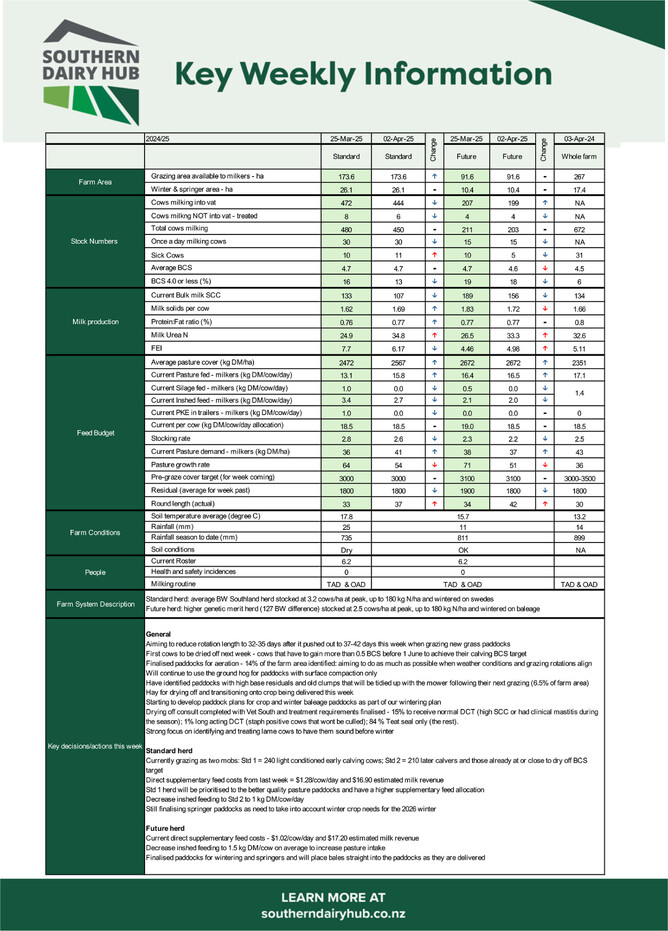General
Aiming to reduce rotation length to 32-35 days after it pushed out to 37-42 days this week when grazing new grass paddocks
First cows to be dried off next week – cows that have to gain more than 0.5 BCS before 1 June to achieve their calving BCS target
Finalised paddocks for aeration – 14% of the farm area identified: aiming to do as much as possible when weather conditions and grazing rotations align
Will continue to use the ground hog for paddocks with surface compaction only
Have identified paddocks with high base residuals and old clumps that will be tidied up with the mower following their next grazing (6.5% of farm area)
Hay for drying off and transitioning onto crop being delivered this week
Starting to develop paddock plans for crop and winter baleage paddocks as part of our wintering plan
Drying off consult completed with Vet South and treatment requirements finalised – 15% to receive normal DCT (high SCC or had clinical mastitis during the season); 1% long acting DCT (staph positive cows that wont be culled); 84 % Teat seal only (the rest).
Strong focus on identifying and treating lame cows to have them sound before winter
Standard herd
Currently grazing as two mobs: Std 1 = 240 light conditioned early calving cows; Std 2 = 210 later calvers and those already at or close to dry off BCS target
Direct supplementary feed costs from last week = $1.28/cow/day and $16.90 estimated milk revenue
Std 1 herd will be prioritised to the better quality pasture paddocks and have a higher supplementary feed allocation
Decrease inshed feeding to Std 2 to 1 kg DM/cow/day
Still finalising springer paddocks as need to take into account winter crop needs for the 2026 winter
Future herd
Current direct supplementary feed costs – $1.02/cow/day and $17.20 estimated milk revenue
Decrease inshed feeding to 1.5 kg DM/cow on average to increase pasture intake
Finalised paddocks for wintering and springers and will place bales straight into the paddocks as they are delivered



